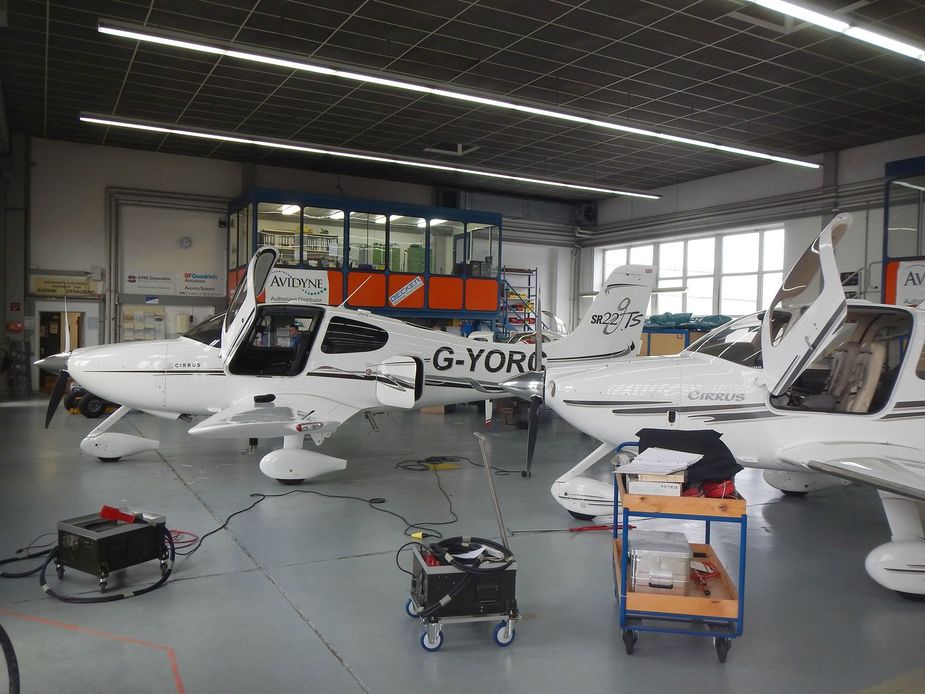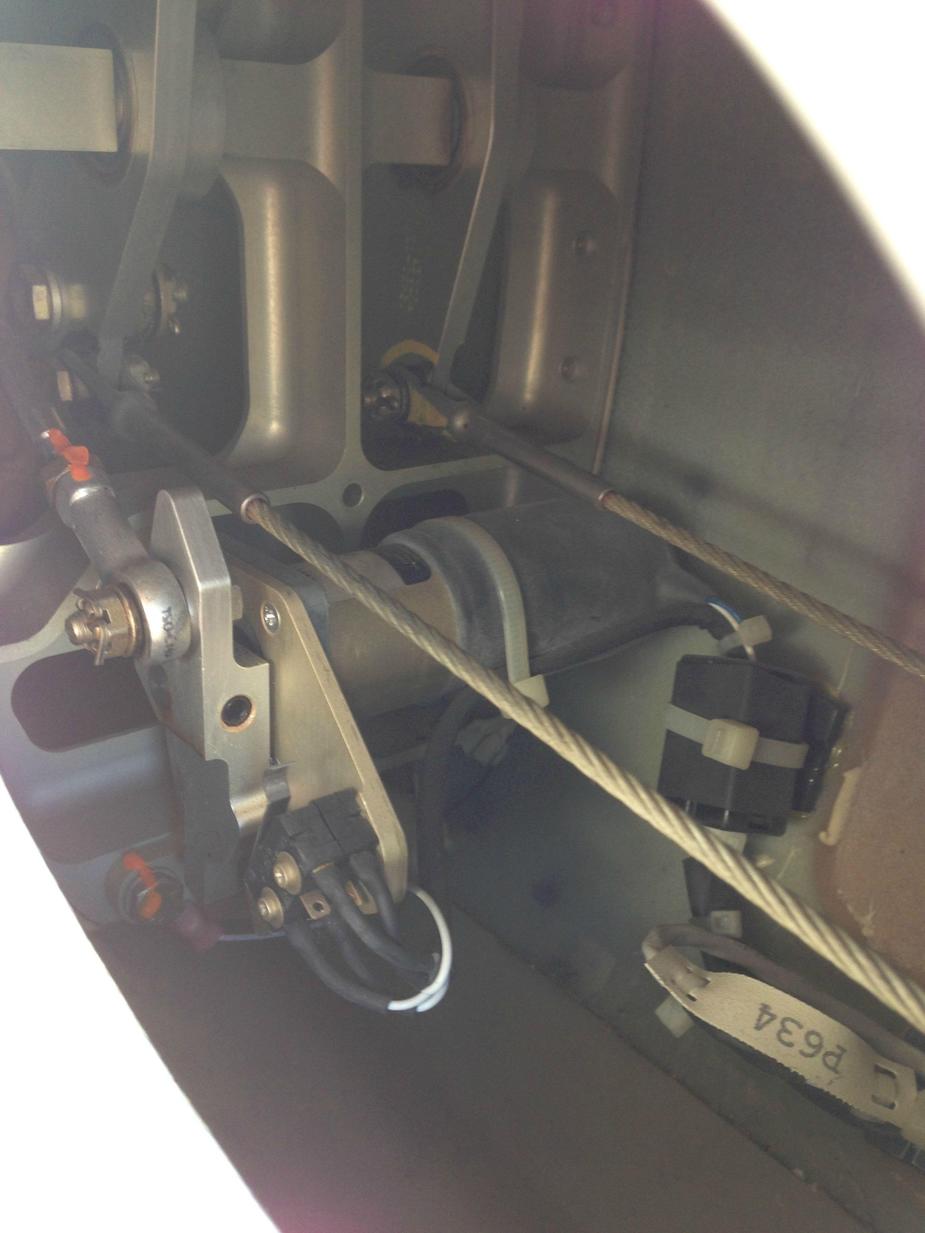G-YORC in the shop at Avionik Straubing, two days ago … with another Cirrus that had A/P disconnects as well. Martin Scheifl, the A/P specialist told me that all servos of that plane were full of carbon dust …

all servos of that plane were full of carbon dust …
To me that suggests that the software in the autopilot is crap, and is doing this (9MB mp4 video – see here for the full article).
Brush DC motors are really unsuitable for aviation servos – because the brushes will wear out as sure as death or taxes (actually with the cheap and nasty motors most makers use the commutator wears out even before the brushes) and when they wear out you will have some sort of autopilot misbehaviour which may not be immediately apparent and which the autopilot has no means of detecting until it gets really bad.
But brush DC motors are not so crap that they would not last say 1000-2000hrs of normal flight control. What is prob99 happening in these autopilots is that the software is stupid and is constantly driving the servos back and forth. In some designs (not the King ones) the motor is driven from a pulse width modulated waveform which causes a lot of arcing on the brush/commutator interface.
The DFC90 uses the old STEC servos (for obvious reasons to do with limited funding and engineering capability at Avidyne) and those are old servos – maybe a 30 year old design. But – in a classic case of not all the holes in the cheese lining up – they were probably “OK” when driven by simple analog circuitry which had a relatively low proportional gain (low proportional gain and a long time constant integral gain are an easy way to avoid instability while delivering reasonable steady state performance) so the servo motor wasn’t being driven all over the place. But modern software-based control loops in say the KFC225 (see above video) and in the DFC90 are going to be smarter, but the programmers never realised they are driving a – wait for it – MOTOR at the end of it, and I am damn sure they never monitored what the motor is actually doing during a flight. It’s not the sort of thing a programmer will think of… You throw the thing together, if you get integer overflows or underflows you do a global edit from “int” to “float” (if your algorithm is really dumb you use “double” and then anything will work  ) stick it in the plane, a factory pilot takes it for a flight, and if it works you start on the flight testing programme and on the forms to get the TSO.
) stick it in the plane, a factory pilot takes it for a flight, and if it works you start on the flight testing programme and on the forms to get the TSO.
The KFC225 motors are full of black soot as well.
I was just reading your KFC225 epistle, Peter, and it certainly would put me off a similarly equipped aircraft. However, the 225 is quite common in Beech Bonanza A36 and B36; do you know if it works in that application?
The problems are indeed aircraft type dependent, with the TB20/21 and the Cessna Caravan having the worst issues.
There are solutions, however.
Had a KFC 200 in my 1984 Bonanza A36 (orig equipment) and in 10 years and 1800 hrs it never played up once.
Is a KFC 200 digital though, or is it an analogue design?
It is analog, AFAIK.
For what it is worth, if you want a background, have a read of my article. I know far from everything on this topic, and Honeywell have been completely 100.000% non-co-operating (usually flatly denying that a single autopilot has ever failed) but I have spent an awful lot of time on this, done a lot of bench testing, and in there you will get the drift of why some types are OK and some are not – probably…
It’s all down to the holes in the cheese lining up. Every King servo, going back to the 1970s, has the same defective design. But it didn’t matter until some other holes in the cheese started to line up.
I’ve sent you an email, Neil.
I think only the PITCH SERVO is S-TEC, the two trim servos (pitch and roll) are not, they have a Cirrus spare parts number.
I cannot tell if the servos are “crap”. The DFC90 autopilot is a DREAM in flight though. If it means i have to replace or clean the servos every 1000 ours, well, that’s okay with me. The two trim servos cost about 800 Euros each and they are very easy to install. And the NEW VERSION is brushless anyway.
I would NEVER go back to the S-TEC55. The DFC90 converts the plane into a much more professional tool.
How are Avidyne getting on with their King-like servos, which they announced a long time ago? I would expect these to be replacing the STEC servos, which in any case STEC refuse to service if they were driven from a DFC90 (they sent a “nastygram” to all the dealers last year – whether they can legally operate that policy is being argued). I would also expect them to be brushless. Or are they doing STEC-style servos but brushless?
What do the “Cirrus-labelled” servos look like?
This is the pitch trim servo in my SR22. I must say that the installation and especially the metal parts look nice and well designed. All parts make a pretty high quality impression, the servo motor probably beeing the weakest part.
